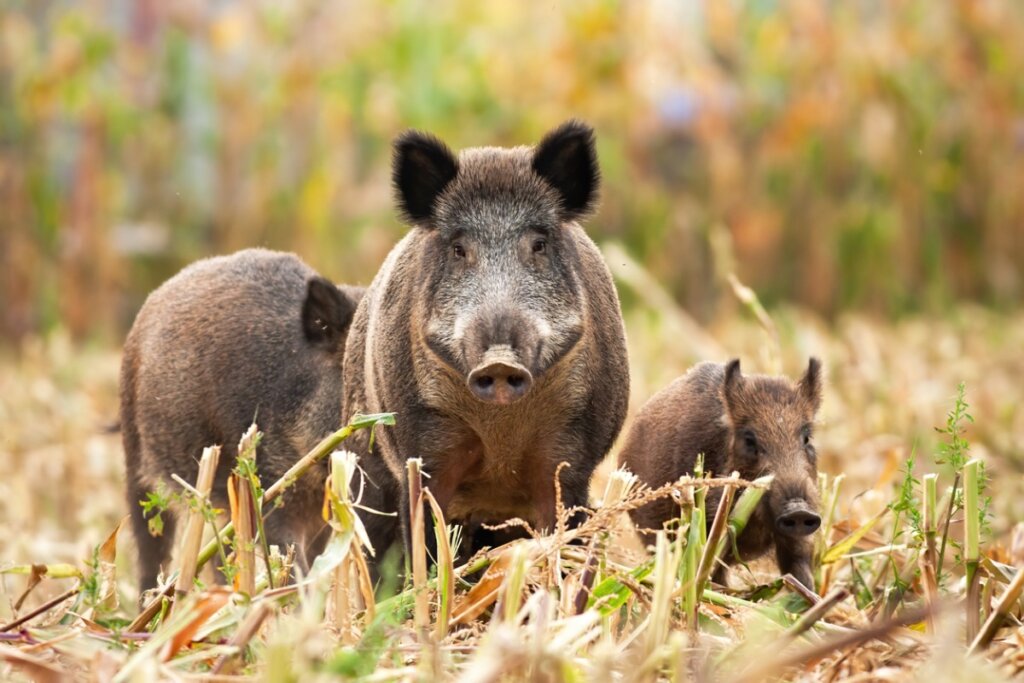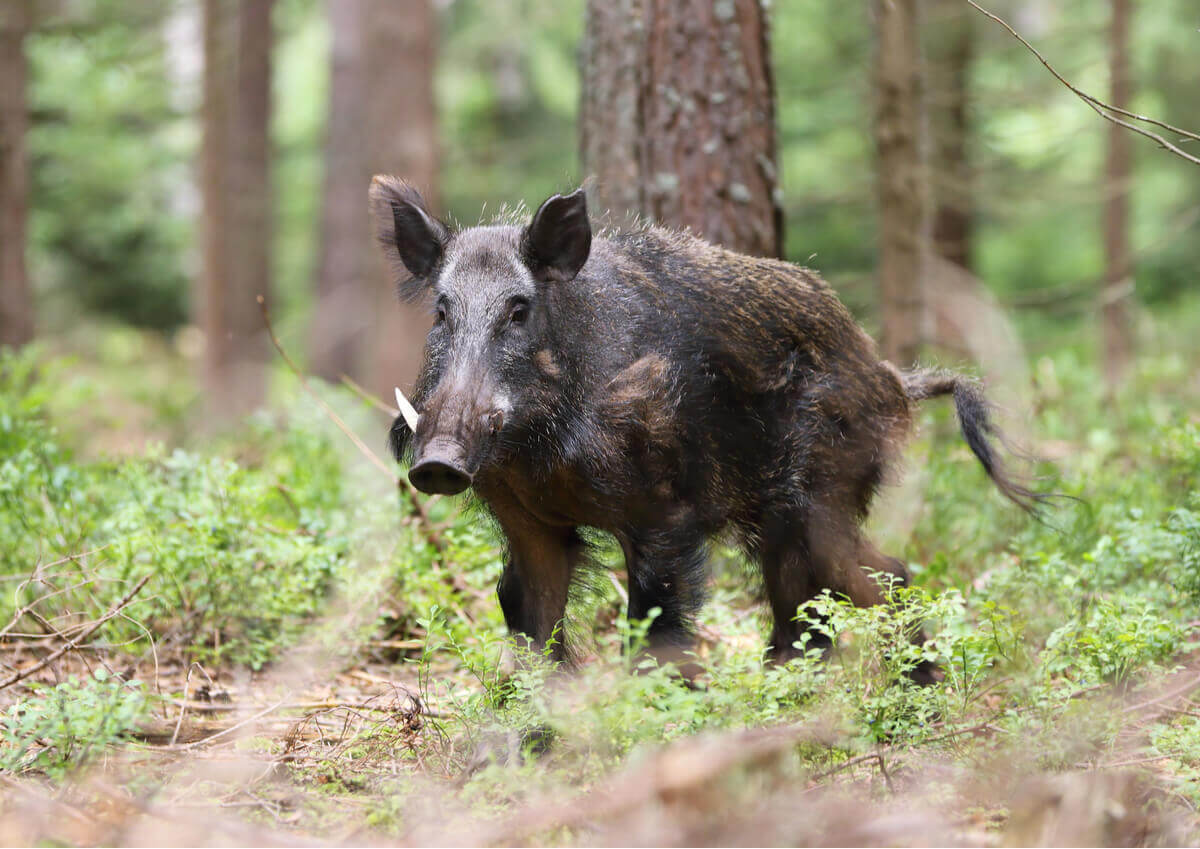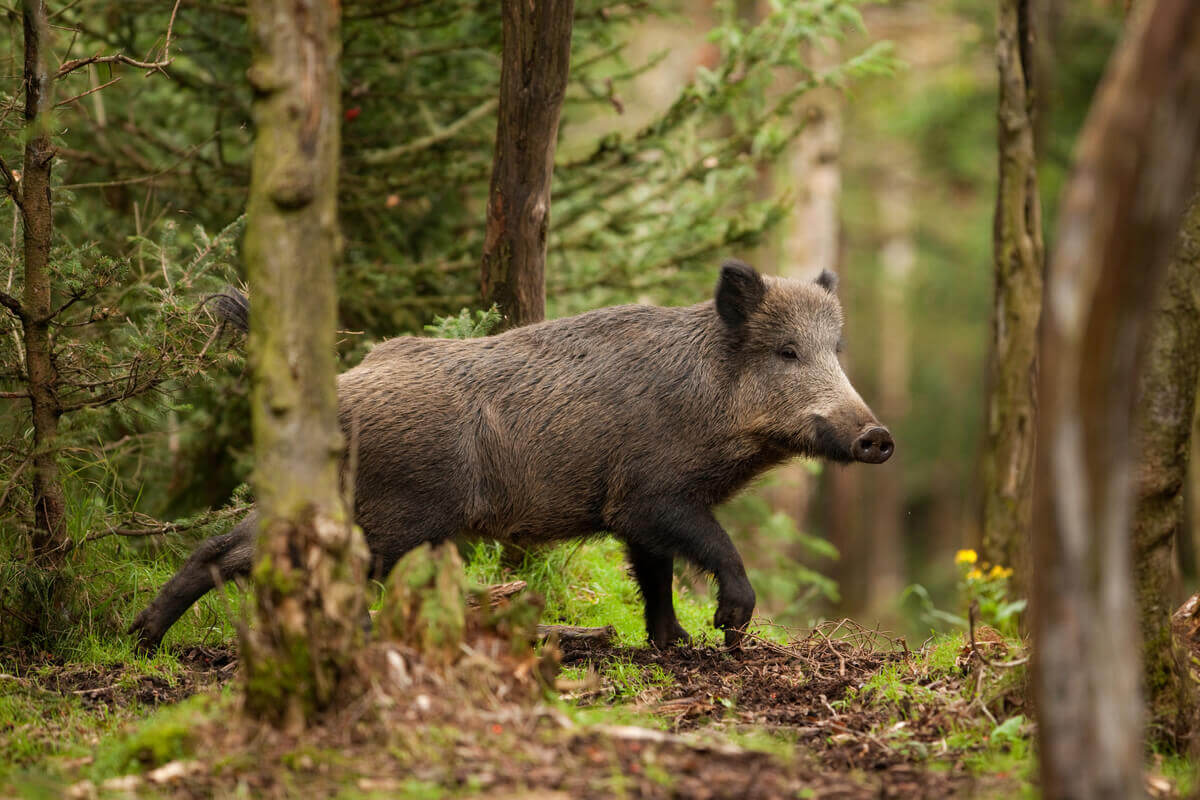How to Drive Away Wild Boars?

Whether it’s because they eat your crops, your garbage, or because they make holes in your garden, you may be interested in knowing how to drive away wild boars. In addition, meeting one of these mammals face to face (and more so if it’s a female with young offspring) can lead to an unpleasant accident if the situation isn’t handled well.
Therefore, in this article, you’ll find the most effective techniques for preventing these animals from entering your farm. We’ll also provide you with information about the species because knowing a little more about wild boars will help make your methods more effective. Keep reading!
The characteristics of wild boars
The wild boar (Sus scrofa) is a mammal that belongs to the Suidae family and to the genus Sus. It’s found in a wide variety of habitats: Grassy savannas, woodlands, agricultural areas, scrublands, and swamps. Although they’re weather-resistant animals, they tend to avoid places with high or very cold temperatures.
Wild boars are omnivores. They predominantly feed on plant matter, particularly fruits, nuts, roots, and green plants. They’re also known to consume bird eggs, carrion, small rodents, and invertebrates. They’re opportunistic, varying their diet depending on the availability of sustenance.
At the same time, it’s a gregarious and matriarchal species. Groups are made up of females related to each other (mothers, daughters, aunts) and can have more than 100 individuals, although most often they don’t exceed 20 individuals. Males, on the other hand, are solitary and rarely stay in a group when they reach maturity.
Wild boars can breed at any time of the year. The gestation period lasts from 108 to 120 days and each litter consists of 5 to 6 cubs. Parental care is carried out by the females, as males are polygynous (they reproduce with more than one female per reproductive event) and tend to leave the group after mating.

How to drive away wild boars
In areas where wild boars have been introduced by man, they harm native species, as they inhibit the growth capacity of trees where they roam. In addition, their protective and territorial nature prevents other animals from sharing their habitat with them.
Wild boars can zoonotically carry and transmit a wide variety of parasites, including Trichinella, Toxoplasma gondii, and ticks.
The influence of humans in the natural environment can cause wild boars to enter populations, crops, or farms. Given their great reproductive capacity and their eating habits, they can easily damage the agricultural areas they enter. They’re very fond of rooting for worms and roots, so they often spoil sown soil.
Due to all the annoyance they generate, below are the most effective techniques to drive away wild boars. It’s best not to use them all at the same time but to rotate them, as boars are very intelligent animals and they’ll end up learning that some of the stimuli you use to scare them aren’t a real danger for them.
Sounds and ultrasounds
Wild boars rely heavily on their hearing and smell. Their hearing range is 42 to 40,500 Hertz, so one option to keep them away is the use of ultrasound equipment. It’s sold on the market together with loudspeakers that you can distribute around the boundaries of the land, many of which you can program to go off periodically.
A cheaper option is to record sounds and reproduce them in your areas of passage. The most effective, sadly, are those related to humans, such as dogs barking, a shotgun firing, or people talking. Danger vocalizations from the wild boars themselves can also be played.
Driving away wild boar with olfactory repellants
Another great sense of boars is their sense of smell. There are many alternatives for warding off them through smells: Spreading human hair around the area (you can ask for it at a hairdresser) or buying synthetic wolf urine, for example.
Another option is to buy specific feed to scare away wild boars. It’s not toxic to them, and when they eat it and see that it tastes bad, the next time they smell it, they’ll walk away. You can also make it at home with cereals and some oil with an unpleasant taste: But beware of accidental poisoning. Hurting them is never an option.
Home remedies
There are some more traditional methods that can be useful on a small scale, as in the case of gardens or urban areas.
- If your garbage can is outside, make it airtight and always keep it closed. This way, you won’t attract wild boars with food smells.
- Hang bags and plastics that flap in the wind; This is an unpleasant sound for them.
- Keep your pets indoors at night, which is when wild boars often approach human sites.
- Play recordings and other sounds at wild boar hotspots.
Fences
Physical barriers are the most effective option in the long term and you can also use them so that wild boars don’t access roads, preventing accidents. Good fencing that’s resistant to the weather and used in the right way can prevent the passage of these mammals and even other animals that could cause problems, such as rabbits or predators.
If you still see wild boars roaming the area, you can add one of the deterrents mentioned above.

Never resort to violence
Although these mammals can be really destructive in farms and crops, it’s important to always prioritize respect and dissuasive techniques that don’t harm the animal. Wild boars fear humans and only go down to their lands when they find something better than in their natural habitat. Peaceful coexistence is possible.
Hunting an animal without a license isn’t only unethical, but also illegal. Even if it’s only out of fear of a complaint or the monetary reprimand that it entails, never opt for violence when driving away a living being. In many ecosystems, the real intruders are humans.
All cited sources were thoroughly reviewed by our team to ensure their quality, reliability, currency, and validity. The bibliography of this article was considered reliable and of academic or scientific accuracy.
- Sus scrofa (wild boar). (s. f.). Animal Diversity Web. Recuperado 6 de septiembre de 2021, de https://animaldiversity.org/accounts/Sus_scrofa/
- Cahill, S., Llimona, F., Cabaneros, L., & Calomardo, F. (2012). Characteristics of wild boar (Sus scrofa) habituation to urban areas in the Collserola Natural Park (Barcelona) and comparison with other locations. Animal Biodiversity and Conservation, 35(2), 221-233.